If we were to think of successful medical practice as akin to a healthy body, your administrative and clinical staff who make the judgment and decision, gather data, and communicate will be the brain. They do all the “thinking” required to run the organization
Now, what would be the heart of this body? The answer is technology.
The heart pumps blood throughout the body to keep it alive and active. Similarly, a successful medical practice uses technology to pump information through EHRs and practice management (PM) systems to reach the organization’s “brain.”
Technology needs to be supplemented or replaced due to technical advancements, changes in regulations, and the industry environment. Such transitions can and often do affect the health of the practice. Healthcare business leaders usually base their technology decisions on clinical documentation functionalities, relegating revenue cycle functionality to second place.
Doing this is like inserting a new heart that will not pump enough blood to the brain. The organization may survive but likely needs to overcome challenges to be effective.
Here’s a list of top considerations for choosing the right revenue cycle technology for your organization:
Electronic Health Records Functionality is essential. So is Revenue Cycle Functionality.
Labour improvements and savings achieved through enhanced clinical workflow can easily be lost if disparate systems need to be pieced together to achieve the billing functionalities your organization requires. In case an EHR needs to be augmented with billing functionality, ask for technology recommendations from the EHR vendor. Often, they are aware of limitations and can direct you to revenue cycle system vendors who can provide the features you need, with the integrations desired with the EHR.
Understand how the new system impacts your revenue cycle workflow.
Examine how information is pulled together in your organization to create a claim and how the new technology will affect this workflow. For example, if you are considering a new or an additional system to confirm eligibility, how will the information be channeled into the workflow? If the system requires an additional log-in (which takes time to access) or if data needs to be transferred manually to a patient account (time-consuming and leaving room for human error)? Consider if the new system is the best solution? There may be better alternatives.
Think about all the ‘roads’ of data that feed into the technology.
Large medical practices that work with hospitals have hospital patient data that feeds directly into the practices’ software systems. For each data feed, confirm the procedures and timeframes involved for making changes so there can be a smooth transition to the new technology. Also, devise a system to test the data feeds before it goes “live.” The worst time to find out you are not receiving all the information you need is when claims start to back up.
Of course, by no means, this list is everything you should be looking for in new technology solutions for your practice.
However, if you choose your technology carefully based on how it impacts and possibly enhances the revenue cycle workflow processes and functionality, you are more likely to make the right choice.
If the ideas presented in this blog resonate with your thinking, and you are looking for guidance on how technology, process, and people can be brought together to transform your revenue cycle, talk to us.

